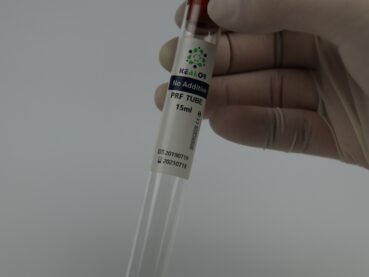Introduction
Platelet-Rich Plasma (PRP) therapy is revolutionizing medical and cosmetic treatments, offering groundbreaking solutions for various conditions. Integrating a Biotin Activator into PRP kits has further enhanced this technology, making it an essential tool for medical professionals. In this article, we delve deep into the world of PRP kits with Biotin Activator, discussing their components, benefits, and applications.
What is PRP?
PRP, or Platelet-Rich Plasma, is a concentrated form of plasma containing high levels of platelets, growth factors, and cytokines. These elements play a critical role in the body’s healing process, promoting tissue repair and regeneration.
The Science Behind PRP
The healing properties of PRP are attributed to the high concentration of growth factors. These factors stimulate cellular growth, angiogenesis, and promote the healing of bones and soft tissues.
Biotin Activator in PRP
Biotin, also known as Vitamin B7, when used as an activator in PRP kits, enhances the growth factor’s activity, accelerating the healing process.
Benefits of Biotin in PRP
Biotin’s role in PRP is pivotal. It boosts cellular growth, aids in the synthesis of fatty acids, and enhances skin, hair, and nail health.
PRP Kit Components
A standard PRP kit includes a blood collection tube, centrifuge, anticoagulant, and biotin activator. These components work together to isolate and activate the PRP.
How PRP Kits Work
The process involves drawing the patient’s blood, centrifuging it to concentrate the platelets, and then activating these platelets with a Biotin Activator for therapeutic use.
PRP in Medical Treatments
PRP therapy finds extensive use in treating musculoskeletal injuries, osteoarthritis, and surgical recovery.
PRP in Cosmetic Procedures
In the cosmetic industry, PRP is popular for skin rejuvenation, treating hair loss, and enhancing post-surgical healing.
Safety and Efficacy
PRP therapy is generally safe, with a low risk of adverse reactions since it uses the patient’s own blood.
Potential Side Effects
While generally safe, PRP therapy may have side effects like mild pain, swelling, or bruising at the injection site.
Biotin Activator’s Unique Role
The Biotin Activator in PRP kits specifically targets the activation and efficacy of platelet growth factors, making treatments more potent and efficient.
User Instructions for PRP Kits
Proper usage involves drawing blood, processing it in the centrifuge, and then carefully activating the PRP with the Biotin Activator.
Choosing the Right PRP Kit
Selecting the right PRP kit depends on factors like the concentration of platelets required, ease of use, and specific treatment needs.
Professional Opinions on PRP
Many healthcare professionals endorse PRP therapy for its efficacy in accelerating healing and its versatility in various treatments.
Conclusion
PRP kits with Biotin Activator represent a significant advancement in regenerative medicine, offering enhanced healing and cosmetic benefits. This technology holds immense potential for future medical applications.
FAQs
What makes PRP with Biotin Activator different?
Biotin Activator enhances the efficacy of PRP by boosting the activity of growth factors.
Is PRP therapy painful?
Patients may experience mild discomfort during the procedure, but it is generally well-tolerated.
How long does it take to see results from PRP treatments?
Results can vary, but typically improvements are noticed within a few weeks of treatment.
Can anyone use PRP therapy?
While PRP is safe for most individuals, it’s essential to consult with a healthcare provider first.
Are results from PRP permanent?
While results are long-lasting, they may not be permanent and might require follow-up treatments.








